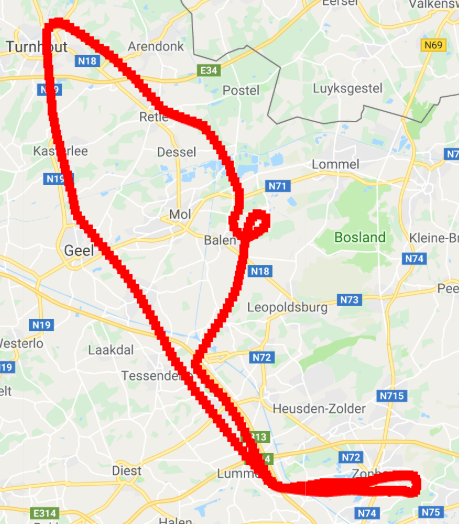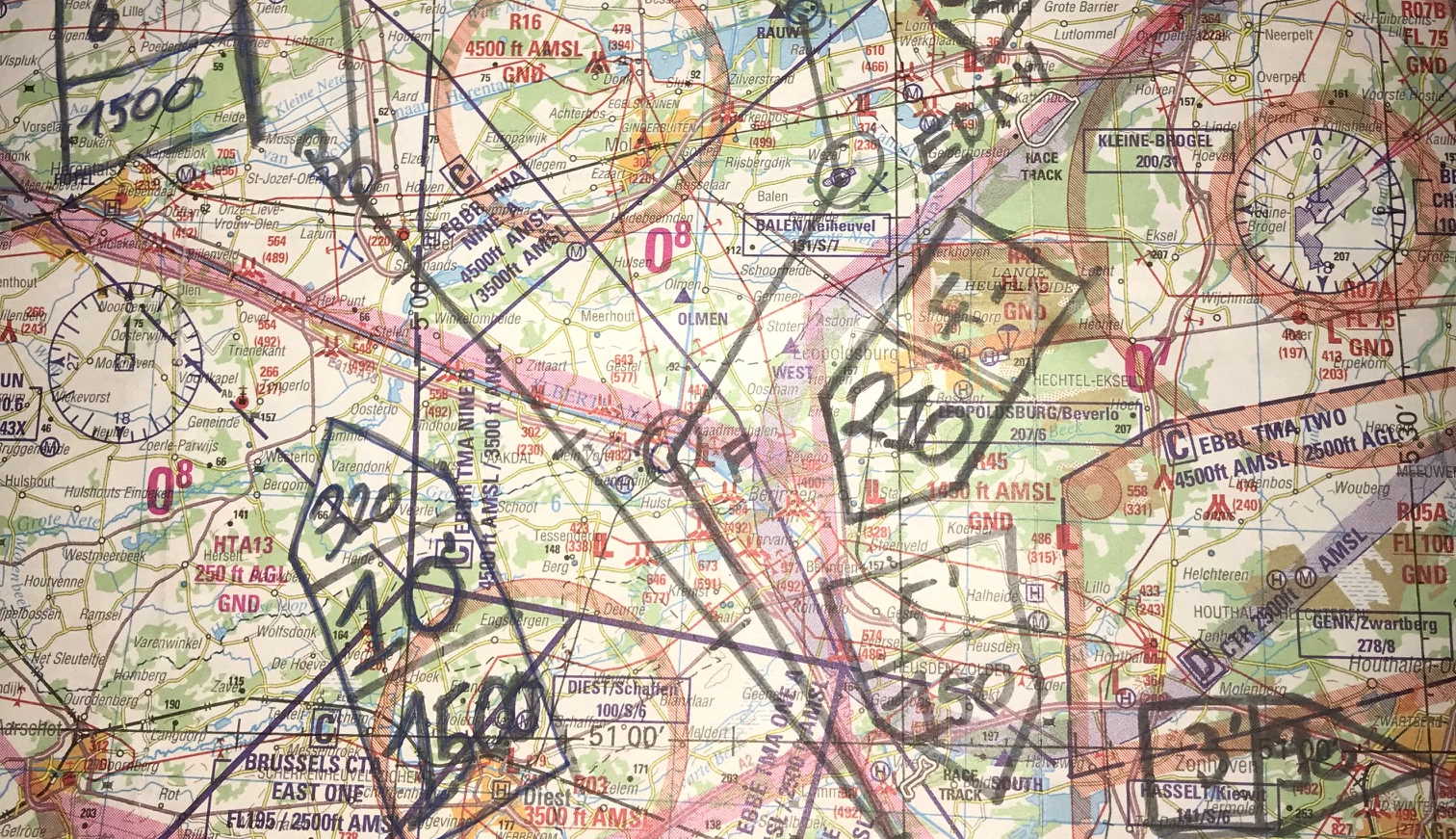Yesterday we went flying from EBZH over Geel to Turnhout up to EBKH and then back.
The navigation by itself went quite well, my preparation was mostly correct and it was quite easy to identify the important points on the ground.
A few things could've gone better.
Navigating in Flight
I didn't realize I was going to be allowed to use the compass on the GPS system in the plane. I thought we'd only use the magnetic compass. In that sense I didn't expect us to fly more accuratly than maybe 5 or 10 degrees.
But we did, so I had to focus on flying the course quite well.
Normally what you do is when you are on course look at a point in the distance and fly towards it. That's actually not so hard - but you have to realize it.
A very important tool in the navigation is the timer. When you are at a point where you change course start the counter. When you reach a point - for example a city you are supposed to pass by you can check if it's actually what you see because you know after how many minutes you are supposed to arrive at this point.
Things that are easy to navigate with - in Belgium at 2000 ft - are: waterways and other water, highways and other big roads, cities.
The "Albertkanaal" is nog extremely visible on the map (but visible) but while flying it is very easy to see. Luckily is passes by Hasselt so when in doubt, following that channel would be a way to find your way back.
My instructor explained that in the past the view wasn't usually as good as it seems to be these days. I suspect air quality has improved, removing smog from the air.
When visibility is lower, course and timer becomes a lot more important.
The Flight Itself
It was actually quite uneventful. We listened to "Brussels Information" during our flight. Picked up one conversation and adjusted the QNH to what we heard.
It was really great to fly a little further and more straight.
Sadly, the airfield where we were to make a stop (EBKH) was closed. We did not know before we arrived: airfields have a signal square and a yellow X means it's closed.
Instead of landing, we did a "low approach" where we do everything as if we were going to land, execpt actually land.
Things to Improve
When starting I did some dumb things wrong - I think I was so focused on the navigation of the flight I forgot to remind myself of the basic routines. I had a three week break due to weather which didn't help either.
Some things I did wrong:
- Didn't put on my sun glasses! (it was cloudy when we left but it got more sunny)
- Did not lock the door (my instructor pointed it out immediatly)
- After take-off I lowered the flaps!!
- Normally after take-off you move the flaps up to increase speed, it'll lower the nose of the plane so you anticipate and keep it at the same attitude. Now my now went UP instead - which was super weird, I did not get time to realize what I was doing because my instructor already pointed it out.
During navigation, I found it a challenge to keep track of where exactly the wind was coming from and anticipate on that.
I also found it a challenge to stay on course within a 5 degree margin.
We had quite some cross wind on landing. I corrected for it quite well on the approach, but after the landing the wind drops and I didn't compensate enough for that, sending me slightly to the right.
My planning underestimated the time our trip took though. I counted on 40 minutes flying but it was around an hour.
Good Things
My chart and the directions were clearly marked. I also noted the radio frequencies I would need, so they were easy to find when I needed them.
I bought a knee-pad which I could straf to my knee and hold the chart and additional info on the airfield we were visiting.
It was easy to identify where I was most of the time, because I had prepared well by looking for possible landmarks on the map. We also tried to identify things we saw on the map.
As far as basic flying was concered I kept the height reasonable well - but could be better though.
Next Flight
The next flight will be "practice forced landing". Where my instructor pulls the throttle to idle to simulate engine failure.
What I do then is:
- Convert all my excessive speed into height until I reach 100 km/h (our optimal gliding speed)
- When at speed, set flaps to "T/O" (half way)
- While climbing, check both fuel valves are open!
- Find a field, preferably up-wind
- Fly towards the field and fly over it a few times to inspect it (obstacles, ...)
- Fly out again until we are at 600 ft. Turn in until the view of the field is like what we would see just before a Final turn when doing a circuit
- Perform the final turn and approach as if we were going to land there in the field
- Go up again and don't actually land!!
This is scary stuff, and really important too. Perhaps THE most important thing to master.
Flight Track
Compare this to my try-out in FlightGear:

Running costs
- 1 hour instructor time: € 36
- 1:06 flying time: € 105,60
